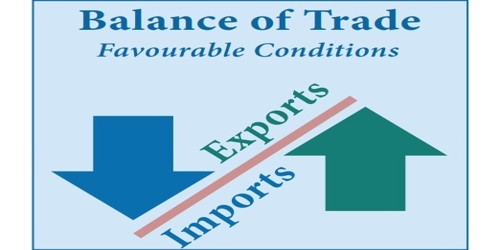
Retirement savings are a cornerstone of financial planning, but market crashes can pose significant threats to your hard-earned nest egg. Economic downturns can lead to loss of portfolio value, making it essential for retirees and those nearing retirement to have strategies in place to protect their savings.
Understanding Market Crashes
What Is a Market Crash?
A market crash is defined as a sudden and severe decline in the value of financial markets that leads to widespread panic and significant financial losses. While the causes can be manifold, including economic recessions, political instability, or unexpected global events, the outcome is often a deteriorating confidence in the market, resulting in sharp sell-offs and increased volatility.
Historical Context
Throughout history, markets have experienced numerous crashes. Notable examples include:
The Great Depression (1929): One of the most severe economic downturns in history, which saw stock prices plummet and led to widespread unemployment.
Dot-Com Bubble (2000): The collapse of an internet stock bubble that caused significant financial losses throughout the tech sector.
Financial Crisis (2008): A housing market collapse that led to a global recession and a dramatic loss of retirement savings for many individuals.
Each of these events underscores the importance of having protective measures in place to safeguard retirement savings in times of economic uncertainty.
Why Protecting Your Retirement Savings Matters
Preserve Your Financial Security
Your retirement savings are crucial for maintaining your lifestyle once you stop working. Market crashes can severely impact your savings, making it necessary to implement protective strategies to ensure your financial security.
Mitigate Emotional Stress
Watching your portfolio decline in value can be emotionally taxing. Knowing you have a plan in place can help reduce anxiety during market downturns, allowing you to remain focused on your long-term financial goals.
Maintain Portfolio Longevity
Protecting your retirement savings helps ensure that your funds last throughout your retirement. Significant portfolio losses can require you to adjust your lifestyle, postpone retirement, or draw down your savings more quickly than anticipated.
Assessing Your Risk Tolerance
Before implementing specific strategies to protect your retirement savings, it is essential to assess your risk tolerance. Understanding your comfort level with risk can help inform your asset allocation and investment decisions.
Factors Influencing Risk Tolerance
Time Horizon: The time remaining until you retire or need to access your savings can influence your risk tolerance. Generally, those with longer time horizons can afford to take on more risk.
Financial Situation: Your income, expenses, and overall financial situation can impact your ability to withstand market downturns. A secure financial footing allows for a more aggressive investment strategy.
Psychological Factors: Personal experiences and attitudes toward risk can affect how comfortable you feel with market fluctuations. Understanding your emotional responses to losses is critical.
Risk Tolerance Assessment Tools
Consider using online questionnaires or risk tolerance assessments to gauge your comfort level with investment risk. Financial advisors can also provide valuable insights based on their expertise.
Strategies to Protect Your Retirement Savings
With a clear understanding of your risk tolerance, you can implement several strategies to protect your retirement savings from market crashes. Here are some effective approaches:
1. Create a Diversified Portfolio
Diversification involves spreading investments across various asset classes, sectors, and geographic regions to reduce risk. A well-diversified portfolio may include:
Stocks: Provides growth potential but comes with volatility.
Bonds: Typically offers stability and income, reducing overall portfolio risk.
Real Estate: Can serve as a hedge against inflation and provide rental income.
Commodities: Investments in commodities can help protect against market volatility and inflation.
2. Implement Asset Allocation
Asset allocation is the process of determining how to distribute your investments among different asset classes based on your risk tolerance and financial goals. Key strategies include:
Conservative Allocation: If you are close to retirement, consider holding a higher proportion of bonds and fixed-income investments.
Balanced Allocation: For those who are several years away from retirement, a mix of stocks and bonds can offer growth potential with manageable risk.
Growth-Oriented Allocation: Younger investors may choose a more aggressive approach with a higher percentage of equities, focusing on long-term growth.
3. Regularly Rebalance Your Portfolio
Over time, certain investments may grow or decline, causing your portfolio to drift from its target asset allocation. Regularly rebalancing—typically once or twice a year—ensures that you maintain your desired level of risk and can help protect against sudden market downturns.
4. Use Stop-Loss Orders
Stop-loss orders can be set to automatically sell a security when it reaches a specific price point, helping limit losses during market downturns. However, while this strategy can help protect investments, it is essential to understand that it may also trigger sales during short-term volatility.
5. Increase Cash Reserves
Maintaining a cash reserve within your retirement portfolio can provide a cushion during market downturns. Cash equivalents, such as money market funds or short-term certificates of deposit, can provide liquidity and capital preservation.
6. Consider Various Investment Strategies
Explore alternative investment strategies that can help hedge against market volatility, including:
Tactical Asset Allocation: This strategy involves actively adjusting your portfolio’s asset allocation based on market conditions, allowing you to take advantage of trends while managing risk.
Option Strategies: Options such as puts and calls can provide a safety net against falling prices, although they come with complexity and require knowledge of financial instruments.
7. Utilize Annuities
Annuities can offer guaranteed income in retirement, reducing the impact of market fluctuations on your savings. Fixed annuities provide predictable income, while variable annuities allow for potential growth based on market performance.
8. Plan for Emergency Expenses
Having an emergency fund can protect your retirement savings by ensuring that you have cash on hand to cover unexpected expenses without needing to sell investments during a downturn. Aim to maintain enough liquidity for several months of living expenses.
Preparing for Economic Downturns
1. Stay Informed
Market conditions can change rapidly. Keep yourself informed about economic trends, market news, and fiscal policies that may impact your investments. An informed investor is better equipped to make timely decisions.
2. Have a Contingency Plan
Create a contingency plan outlining steps you will take during a market downturn. Having a clear action plan can help alleviate panic and ensure that you make rational decisions rather than emotional ones.
3. Consult a Financial Advisor
If you feel overwhelmed by market conditions, consider seeking professional guidance from a financial advisor. An experienced advisor can help you develop tailored strategies to protect your retirement savings and align your investments with your financial goals.
Common Mistakes to Avoid
While implementing protection strategies is critical, there are common mistakes that can hinder your efforts to safeguard your retirement savings:
1. Overreacting to Market Movements
Avoid making impulsive decisions based on short-term market fluctuations. Emotional reactions can lead to poor choices, such as selling investments at a loss, which may not be in line with your long-term strategy.
2. Neglecting to Review Your Plan
Failing to regularly review and adjust your retirement plan can lead to misalignment with your financial goals. Make it a habit to reassess your plan periodically and adjust as needed based on changing market conditions and personal circumstances.
3. Putting All Eggs in One Basket
Avoid concentrating your investments in a single asset class, sector, or geographic region. A lack of diversification can increase your exposure to risk and make your portfolio more vulnerable during market downturns.
4. Ignoring the Role of Inflation
Inflation can erode the purchasing power of your savings over time. Ensure that your investment strategy accounts for inflation by incorporating growth-oriented assets to help preserve the value of your retirement savings.
5. Failing to Plan for Healthcare Costs
Healthcare can represent a significant expense in retirement. Neglecting to plan for medical expenses can lead to financial strain during economic downturns. Make sure to include healthcare costs in your overall retirement strategy.
6. Underestimating the Power of Bonds
Many investors overlook the importance of fixed-income investments during bull markets, focusing exclusively on equities. Bonds can provide stability and income, helping to mitigate risk during downturns.
Conclusion
Protecting your retirement savings from market crashes requires a proactive approach that takes into account your risk tolerance, investment goals, and market conditions. By diversifying your portfolio, implementing sound asset allocation strategies, and maintaining a contingency plan, you can shield your savings from the adverse effects of market volatility.
While it is impossible to predict market movements, being prepared and informed can provide peace of mind and allow you to navigate economic downturns with confidence. Stay committed to your long-term goals, and remember that with careful planning, your retirement savings can remain secure, allowing you to enjoy a fulfilling retirement.
Related
-
Financial News

-
Cryptocurrency

-

-
Forex Market

-
Economic Indicators

-
Forex Market

